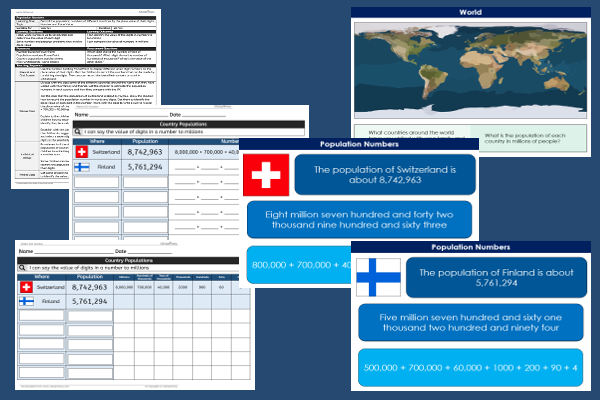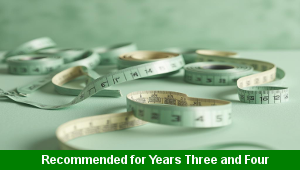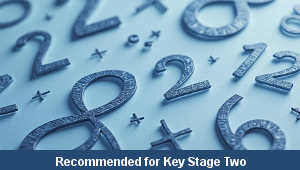Lesson Four – Population Numbers

This maths teaching pack for Key Stage Two gets the children to select and record the population numbers of different countries that can be found around the world by the place value of the digits in each identified number.
The class can explain and model how to split the population number for different counties to show the value of the millions, thousands, hundreds, tens and ones digits.
Download this teaching pack including a lesson plan, classroom activities and an interactive presentation to select and record the population numbers of different countries that can be found around the world by the place value of the digits in each identified number
Activities in this teaching pack include differentiated worksheets to identify and record the population numbers of some of the different countries that can be found around the world by the place value of the digits for each number to present in both words and numerals.
The interactive presentation gets the children to explore the population numbers of different countries in the world by the place value of their digits presented in words and numerals.
This lesson is part of a maths scheme of work to get the children to investigate, order and compare the value of the digits that comprise different sets of numbers with up to seven digits. There are teaching activities for shared learning, differentiated worksheets to support independent learning and interactive presentations to introduce concepts and key skills.
-

Length Calculations
Practise using number calculations skills for addition, subtraction, division and multiplication when solving problems related to length measurements
-

Maths Calculations Assessment
Assess abilities in solving a range of different number problems for addition and subtraction when working with informal and formal written calculations
-

Determinant Lists
Explain and model how to make lists of objects used and found in different locations to match the correct determinants of a and an
-

English SPAG Assessment
Assess abilities in composing sentences for fiction and non-fiction using the correct spellings, punctuation marks and grammar vocabulary phrases
